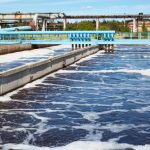What is the Process of Wastewater Aeration?

1. Introduction to Wastewater Aeration:
Wastewater aeration is a key step in the overall wastewater treatment process. It helps in achieving the desired level of water quality by providing oxygen to the microorganisms involved in the degradation of organic matter. These microorganisms, often referred to as aerobic bacteria, require oxygen to survive and convert pollutants into harmless byproducts.
2. Purpose of Wastewater Aeration:
The primary purpose of aeration in wastewater treatment is to maintain dissolved oxygen levels within the water. Adequate oxygen levels are critical for the survival and activity of aerobic bacteria. By continuously introducing air into the wastewater, aeration ensures that these bacteria have enough oxygen to break down organic matter effectively and eliminate harmful substances such as pathogens and nutrients.
3. Aeration Methods:
There are several methods used for wastewater aeration, each with its own advantages and drawbacks. The most commonly employed methods include mechanical aeration, diffused aeration, and surface aeration.
– Mechanical Aeration: This method involves the use of mechanical devices, such as rotating brushes or paddles, to agitate the wastewater and expose it to air. The turbulence created enhances oxygen transfer, improving the efficiency of the treatment process. However, mechanical aeration can be energy-intensive and require regular maintenance.
– Diffused Aeration: Diffused aeration systems utilize fine bubbles to distribute air throughout the wastewater. This is typically achieved through the use of diffusers, such as porous membranes or perforated pipes, which release air at the bottom of the treatment tank. Diffused aeration offers excellent oxygen transfer efficiency and can be adjusted to meet specific oxygen demands. It is widely used in both small-scale and large-scale wastewater treatment plants.
– Surface Aeration: Surface aeration involves the use of mechanical devices, such as impellers or propellers, to create surface agitation and facilitate oxygen transfer. This method is particularly effective in promoting the oxidation of pollutants in shallow basins or lagoons. Surface aeration systems are relatively simple and cost-effective but may not provide uniform oxygen distribution.
4. Factors Influencing Aeration Efficiency:
Several factors impact the efficiency of wastewater aeration, which ultimately determines the success of the treatment process. Some crucial factors include:
– Oxygen Transfer Rate: The rate at which oxygen is transferred from the air to the water is a critical factor in achieving effective wastewater aeration. This depends on factors such as aeration method, depth of wastewater, and hydrodynamics within the treatment tank.
– Oxygen Demand: The oxygen demand of the wastewater, which is the amount of oxygen required to break down organic matter, is another important consideration. It varies depending on the type and concentration of pollutants present in the wastewater. Understanding the oxygen demand helps in determining the appropriate aeration strategy and equipment.
– Mixing and Mixing Intensity: Adequate mixing of wastewater and air is crucial for optimal oxygen transfer and contact between microorganisms and pollutants. The level of mixing intensity affects the distribution of oxygen, microbial activity, and overall treatment efficiency.
– Temperature: Temperature plays a significant role in the performance of the wastewater aeration process. Warmer temperatures generally enhance microbial activity and oxygen transfer rates, but extremes can have detrimental effects.
Summary
Wastewater aeration is an essential component of the wastewater treatment process. It promotes the growth of beneficial microorganisms and enhances the breakdown of organic matter, resulting in the removal of contaminants. By understanding the process and selecting the appropriate aeration method, wastewater treatment plants can ensure efficient and effective treatment of wastewater, contributing to cleaner and healthier environments.
Need Pumping Equipment in Sunrise Beach, MO?
Categorised in: Wastewater Aeration, Water Treatment
